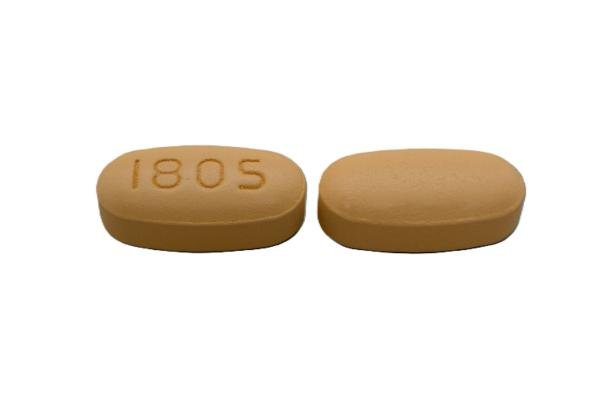How to Take Immediate-Release Metformin Safely?
- admin
- July 5, 2025
- 7:40 pm
- No Comments

Metformin is one of the most prescribed medications in the world for managing type 2 diabetes.
Among its formulations, the immediate-release (IR) version remains widely used due to its cost-effectiveness and proven results.
But just because it is common does not mean it should be taken casually. Using immediate-release metformin correctly is key to avoiding uncomfortable side effects, protecting your organs, and ensuring it works effectively.
Whether you are just starting out or trying to refine your routine, this guide breaks down all the practical ways to take IR metformin safely—and turn it into a seamless part of your lifestyle.
This Article Covers the Following Points:
- What is Immediate-Release Metformin?
- Start with the Right Dose and Go Slow
- Always Take It With Food
- How to Reduce Common Side Effects
- Monitor Your Kidney and Liver Health
- Avoid Drug and Alcohol Interactions
- Don’t Ignore Vitamin B12 Deficiency
- Healthy Habits to Boost Metformin Safety
- What to Do If You Miss a Dose
- Watch for Warning Signs and Symptoms
- Stay Connected with Your Healthcare Team
- Final Thoughts and a Simple Action Plan
What is Immediate-Release Metformin?
Immediate-release metformin is the standard form of metformin that releases the medication into your body quickly after ingestion.
It is primarily used to treat type 2 diabetes by helping lower blood sugar levels through several mechanisms. It reduces glucose production in the liver, increases insulin sensitivity in your cells, and slightly reduces sugar absorption in the intestines.
Unlike the extended-release form, which is taken once daily, immediate-release metformin is usually taken two to three times a day, often with meals. It comes in doses such as 500 mg or 850 mg per tablet.
The IR version is effective but can be harder on the stomach if not taken correctly. That is why understanding how it works and how to take it is crucial.
People often tolerate it well once their body adjusts, but only if they follow the right steps—starting with slow dosing, pairing it with meals, and monitoring for any changes.
This form of metformin is widely used around the world and has been proven in large-scale studies to be a safe, first-line option for people newly diagnosed with type 2 diabetes.
Start with the Right Dose and Go Slow
Jumping straight into a high dose of metformin is one of the most common reasons people experience digestive discomfort. Doctors usually recommend starting low and increasing gradually to allow your body time to adapt.
The usual starting dose for immediate-release metformin is 500 mg once or twice daily. Some people may begin with 850 mg once daily, but that depends on individual tolerance.
From there, the dose is typically increased by 500 mg per week, depending on blood sugar response and how well you tolerate it.
This stepwise titration helps reduce common side effects like nausea, bloating, and diarrhea. Your body gradually becomes more familiar with the medication, and the digestive system is less likely to overreact.
This is very different from extended release metformin.
A typical schedule might look like 500 mg twice daily in week one, increasing to 1,000 mg in the morning and 500 mg at night in week two, and so on.
The maximum dose for most people is 2,000 to 2,550 mg per day, but most people do not need to reach that level to see good results.
The key takeaway: slow and steady really does win the race when starting metformin safely.
Always Take It With Food
One of the easiest ways to improve metformin tolerance is to take it with food. This is not just a casual tip—it is a golden rule.
Taking immediate-release metformin on an empty stomach significantly increases your chances of experiencing nausea, stomach cramps, and even diarrhea. Eating before taking your pill creates a buffer that slows down how quickly the drug hits your digestive system.
But timing matters. Do not wait an hour after your meal. Take your dose with the first few bites or just after you finish your meal.
Doing this helps the drug mix better with the food in your stomach, softening its effects on your gastrointestinal tract.
For those taking it twice a day, aim for breakfast and dinner—two full meals where you would likely eat enough to cushion the medication’s impact. If you snack often or eat light meals, this tip is even more important because the lack of bulk in your stomach can make side effects more pronounced.
In simple terms, metformin and food are best friends. Keeping them together is one of the most effective ways to prevent upset stomach and stay on track with your diabetes treatment.

How to Reduce Common Side Effects?
The most talked-about side effects of metformin are gastrointestinal—nausea, bloating, gas, and diarrhea. While they can be frustrating, they are usually temporary and manageable with a few lifestyle tweaks.
First, as discussed earlier, always take metformin with a meal. That one step alone reduces your chance of discomfort dramatically. Second, increase the dosage gradually. Your digestive tract needs time to adjust, and a sudden jump in dosage overwhelms it.
Stay hydrated. Drinking plenty of water not only supports digestion but also helps flush out excess byproducts of the medication. Some people also find that avoiding high-fat or very greasy meals when taking metformin reduces cramping.
Another trick: if your doctor agrees, ask about switching to extended-release metformin if the IR version continues to cause discomfort. This formulation releases the drug slowly and is usually gentler on the stomach.
Finally, do not ignore symptoms. If diarrhea becomes persistent or if you notice signs of dehydration—like dizziness or fatigue—talk to your doctor.
Most side effects go away after the first few weeks, but they shouldn’t be severe or ongoing. You have options, and being proactive helps ensure your journey with metformin is smooth.
Monitor Your Kidney and Liver Health
Metformin is excreted by the kidneys, so having healthy kidney function is critical to using it safely. If your kidneys don’t clear the drug efficiently, it can build up in your system and increase the risk of a rare but serious condition called lactic acidosis.
Before starting metformin, your doctor will check your eGFR (estimated glomerular filtration rate), which tells how well your kidneys are working. If your eGFR is below 45, your dose may need to be lowered. If it’s below 30, metformin should generally be avoided.
It’s not just the kidneys—your liver also plays a role. Conditions like cirrhosis or fatty liver disease can impair your ability to process medications safely. Alcohol makes things even worse, especially when consumed regularly or in large amounts. It stresses both the liver and kidneys and can amplify the risk of side effects, particularly lactic acidosis.
To stay on top of this, get regular blood tests—typically every 3 to 6 months—depending on your health status. These checkups allow your healthcare provider to catch any red flags early and adjust your treatment plan as needed. Taking metformin safely is a team effort between your medication and your body’s ability to handle it.
Avoid Drug and Alcohol Interactions
While metformin is generally safe, it does not play well with every substance. One of the most important things to know is that alcohol can increase your risk of lactic acidosis—a very rare but potentially life-threatening side effect.
As per Best Dietary Supplement for Diabetics research team, “If you drink alcohol, especially heavily or on an empty stomach, your liver becomes less able to manage the buildup of lactate, which metformin can already influence.”
This double whammy makes things dangerous. Moderation is key, and in some cases, complete avoidance is best.
Beyond alcohol, certain medications can also interfere with how metformin is processed. Drugs like cimetidine (used for ulcers), corticosteroids, and some blood pressure medications can raise metformin levels in your bloodstream or mask low blood sugar symptoms.
Even over-the-counter NSAIDs like ibuprofen, when taken frequently, may increase the burden on your kidneys leading to Alstrom.
It is crucial to inform your healthcare provider about all the medications and supplements you are using. This includes herbal products and vitamins.
Do not make changes without discussing them first. A brief review of your medication list can prevent serious interactions and ensure that your treatment is safe and effective for the long haul.
Do not Ignore Vitamin B12 Deficiency
Long-term use of metformin has been linked to decreased absorption of vitamin B12 in the small intestine.
This may not sound like a big deal at first, but B12 is essential for nerve health, energy production, and red blood cell formation.
Over time, a deficiency can lead to symptoms like fatigue, tingling in the hands or feet, memory problems, and even mood changes.
The tricky part is that these symptoms often overlap with those of diabetes-related nerve issues, making the deficiency harder to spot.
That is why it is wise to monitor your B12 levels if you have been on metformin for over a year.
Doctors usually recommend getting tested every 12 to 18 months and they even recommend combination metformin therapy to a few.
If your levels are low, supplementation is straightforward—B12 can be taken orally or via injection, and it’s generally safe for most people.
Some doctors even suggest taking a preventive supplement, especially for older adults or vegetarians, who may already have lower baseline levels.
A simple blood test can catch this issue early. Being proactive about B12 is not just about checking a box—it is about making sure your energy stays high and your nervous system remains protected while you reap the benefits of metformin.
Healthy Habits to Boost Metformin Safety
Taking metformin is not a substitute for healthy habits—it works best when paired with them.
In fact, lifestyle can make or break your treatment success. Start with food. A balanced diet rich in fiber, lean proteins, and complex carbohydrates helps stabilize blood sugar levels and reduce spikes that stress your system. Avoid sugary snacks, processed foods, and too much saturated fat, especially around the time you take your medication.
Exercise is equally important. Even moderate activity like walking for 30 minutes five times a week can significantly improve insulin sensitivity and help metformin do its job more efficiently. Add resistance training a couple of times per week to build muscle, which naturally helps regulate blood glucose.
Stay hydrated. Water supports your kidneys and helps flush out the byproducts of metformin metabolism. Aim for at least 6–8 glasses per day, more if you are active or live in a hot climate.
Sleep and stress management also play a big role. Poor sleep and high stress levels can throw your hormones off balance and elevate blood sugar. Meditation, deep breathing, or even light stretching before bed can help.
When you build a healthy lifestyle around metformin, the medication becomes far more effective—and side effects are less likely to get in the way.
What to Do If You Miss a Dose?
Let us face it—we all forget to take a pill now and then. But how you handle that missed dose can determine whether you stay safe or run into trouble.
The most important rule is: do not double up on your next dose to “catch up.” Taking too much metformin at once can increase the risk of side effects, especially stomach upset or, in rare cases, lactic acidosis.
If you miss a dose and remember within a couple of hours, go ahead and take it with food. If it is close to the time for your next dose, just skip the missed one and resume your regular schedule.
The drug does not work like insulin—it would not cause immediate blood sugar crashes—so there is no need to panic if you are off by a dose.
To minimize forgetfulness, try setting a daily alarm, using a pill organizer, or syncing it with another routine—like brushing your teeth or starting your workday. Some people find that taking it with breakfast and dinner makes it easier to remember.
Staying consistent is key, but missing a dose once in a while would not derail your progress if you handle it the right way.
Simply learn to choose the right metformin brand in order to reap the desired benefits.
Watch for Warning Signs and Symptoms
While metformin is considered safe for most people, it is still important to be alert for symptoms that could signal a problem.
The most serious—though rare—complication is lactic acidosis. This occurs when lactate builds up in the body faster than it can be cleared, often due to impaired kidney or liver function.
Warning signs include unusual fatigue, muscle pain, breathing difficulty, stomach pain, dizziness, and a feeling of being very cold or weak.
Other symptoms to watch out for include persistent diarrhea, vomiting, or severe bloating—especially if they do not improve after the first few weeks. These can lead to dehydration and should be discussed with your doctor.
If you experience yellowing of the skin or eyes, dark urine, or severe abdominal pain, these could be signs of liver stress and should prompt immediate medical attention.
Low blood sugar is less common with metformin alone but can occur if you are combining it with other diabetes medications like insulin or sulfonylureas such as Glyburide. Symptoms of low blood sugar include sweating, shaking, confusion, and dizziness.
Knowing what to look out for can help you catch issues early and adjust your treatment before they become serious. Your safety depends not just on taking the drug—but also on knowing when it’s not working as expected.
Stay Connected with Your Healthcare Team
Your relationship with your healthcare provider should not end once you are handed a prescription.
In fact, regular follow-up with diabetes support groups is crucial to making sure your metformin treatment is both safe and effective.
At the very least, schedule a visit every 3 to 6 months to monitor your kidney function, liver enzymes, blood glucose levels, and A1c (a three-month average of blood sugar). These markers will guide any needed dose adjustments or lifestyle changes.
This is also the time to discuss side effects, even if they seem minor. Bloating or occasional nausea might be tolerable, but they may hint at dosing issues or the need for a different formulation.
If you are struggling with adherence, timing, or food pairings, your doctor or diabetes educator can offer practical tips that fit your lifestyle.
Bring a list of all medications and supplements you are taking—drug interactions can sneak up on you, and your doctor needs the full picture to guide your care.
If you are planning a surgery, getting imaging with contrast dye, or undergoing any major health changes, you may also need to temporarily stop metformin.
Good communication ensures that metformin stays a helpful ally, not a source of frustration or risk.

Final Thoughts and a Simple Action Plan
Metformin immediate-release is a powerful and affordable tool in diabetes management—but only when used safely. It is not a magic bullet, and it’s not free of complications, especially if misused or taken casually.
The secret to success lies in building a daily routine around it that includes healthy meals, physical activity, good hydration, and awareness of how your body responds.
Start low, increase slowly, always take it with food, and do not hesitate to ask your healthcare provider questions.
Make blood tests and B12 checks part of your long-term care plan. If anything feels “off”—from digestive issues to energy dips—talk about it early. Most side effects are manageable or even preventable with the right lifestyle habits and medical support.
By mastering these practical safety steps, you are not just protecting yourself from unwanted symptoms—you are setting the foundation for long-term health and glucose control.
That is the real goal, after all: to feel better, move more freely, and reduce the risk of diabetes complications over time.
With knowledge, discipline, and a little teamwork between you and your healthcare provider, you can make immediate-release metformin work beautifully in your life.
References: